Note: for the full suite of measurements from the SoundStage! Audio-Electronics Lab, click this link.
Norway’s Hegel Music Systems makes preamplifiers, power amplifiers, digital-to-analog converters (DACs), and what they’re best known for these days: integrated amplifiers with built-in DACs. All of their products are designed in Norway by a team led by founder Bent Holter, and all are manufactured in China.
In the last five years Hegel has released a steady stream of new integrated-DACs -- all-new designs such as their flagship model, the H590 (2018, $11,000, all prices USD), but mostly improved versions of earlier models, often with little or no increase in price (in the US, at least). Hegel’s newest entry-level integrated-DAC is the H95. It replaces the H90, which Sathyan Sundaram reviewed on SoundStage! Access in 2018, and which itself had supplanted the H80, which I used for several months after Roger Kanno reviewed it for this site in 2014. From H80 to H90 to H95, the price has remained unchanged: $2000. I’d very favorably reviewed Hegel’s H390 integrated-DAC ($6000) in December 2019, and was curious to hear how good the H95 might be at only one-third the price.
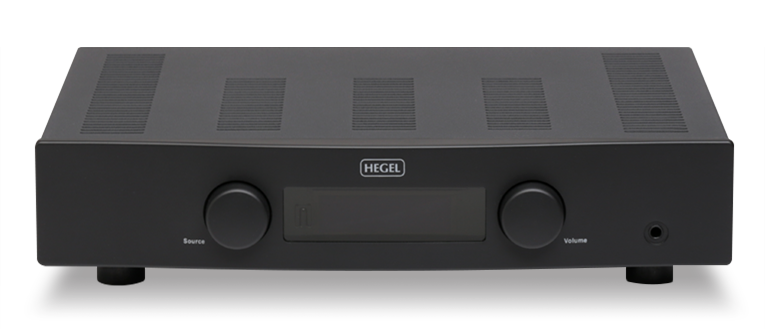
Description
Although I never had an H90 integrated-DAC in my home, I’d seen it often enough to know that, at a glance, I’d be hard-pressed to distinguish it from the new H95 -- and not only because Hegel doesn’t print the model name on the front panel. The two models’ cases are identical -- each measures 16.93”W x 3.94”H x 13.78”D, including controls, connectors, and the three feet. The quality of finish is good, with a simple, refined aesthetic that doesn’t look dated. I like its color, which Hegel calls “Black” but is more a dark gray, and the faceplate has a texture that makes it hard to tell that, unlike the metal case, it’s made of plastic.
The H95’s front-panel controls and rear-panel connectors are also the same as the H90’s. On the front, Source and Volume knobs flank a small, brightly lit OLED display that indicates such things as the volume level (“0” to “99”), the source selected, the signal’s sampling frequency, and the various menu pages (see below). Each knob operates a stepped controller that can be turned infinitely in either direction. They have a good feel, with neither too much nor too little resistance between detents. The Volume control offers increments of adjustment of 1.0dB from “0” to “40,” and 0.5dB from “40” to “99.” This was ideal for me -- I found that my typical listening levels fell between “50” and “60,” so I always could fine-tune the volume to within 0.5dB. Close to the faceplate’s lower-right corner is a 1/4” headphone jack.
When plugged in, the H95 automatically goes into standby mode, and if you’ve never used a Hegel amp, you might at first wonder how to turn the thing on -- there’s no power switch or button on the H95’s front or rear panel. Like all Hegel integrateds and power amps, the power on/off button is directly behind the faceplate, on the bottom plate. I appreciated the discreetness -- the power button is out of the way, yet easy to get to when you need it. As you’ll read below, there was a moment that I needed to sprint like Ben Johnson to get to it fast.
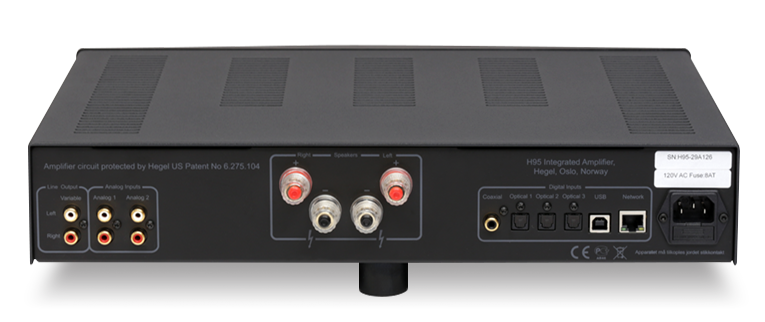
On the rear panel, from left to right, are a pair of line-output jacks (RCA), should you wish to use the H95 as a preamplifier or to feed a subwoofer or two; two pairs of single-ended analog inputs (RCA); left- and right-channel speaker binding posts; and six digital inputs: one S/PDIF coaxial (RCA), three S/PDIF optical (TosLink), one USB, and one Ethernet. At far right is a three-pronged IEC inlet for the stock black power cord, which I used throughout the review. Missing are balanced inputs, which are relatively rare on entry-level integrateds but not unheard of at this price. For example, Schiit Audio’s Ragnarok 2 Fully Loaded integrated-DAC ($1799) has two sets each of balanced (XLR) and single-ended (RCA) inputs.
The H95’s menu, accessed by pressing and holding down Play on its plastic remote control (supplied), opens up some useful options. HT lets you configure the inputs (Ethernet excepted) to send send their signals at a volume level of 85 to the amplifier section and line outputs -- handy for connecting an audio/video processor or similar. With Sleep, you can tell the H95 to go into standby if it detects no audio signal after a set time, or disable Sleep mode altogether. I left Sleep at its default setting of 15 minutes -- I often forget to turn stuff off when I leave the room. If your H95 is connected to the Internet via Ethernet and your router, Update lets you refresh its firmware. Because I was sent one of the very first production units, I had to do this as soon as the H95 arrived. It updated itself in a couple of minutes without any problem. And should you need to revert to the factory defaults, there’s always Reset.
Other features are available, but to access and configure those you’ll need Hegel’s all-metal RC8 remote control (add $150), which they didn’t send me. With the RC8 you can set separate startup and maximum volumes for the speaker and headphone outputs (the factory startup defaults for both are “20,” a low level). To set a startup level, play music through speakers or headphones, set the level with the Volume knob, then press DAC+ and VOL- on the RC8 -- the startup volume is then set for that output. Similarly, the maximum volume is set by playing music through speakers or headphones, choosing the appropriate volume, and pressing DAC+ and VOL+.
Being able to program the H95’s maximum volume levels would have come in handy. When I first got the H95 going, I was streaming music from Qobuz through the Hegel’s Ethernet port, using the BubbleUPnP playback software installed on my Samsung S10 smartphone. It was streaming without a glitch, but I wasn’t watching what I was doing with my phone, and before I knew it, I’d accidentally shot the volume up to “99” (with UPnP streaming, the phone controls the H95’s volume control). The sound through the speakers was a ROAR -- the amp was distorting, and the speakers were being overdriven. As fast as I could, I leaped from my seat, sprinted across the room, and powered down the H95. Call it an unplanned stress test. Thankfully, speakers and amp survived. If you don’t want that to happen to you, get an RC8. I wish Hegel’s supplied plastic remote could program these features -- I’d rather not have to pay another $150 for the privilege.
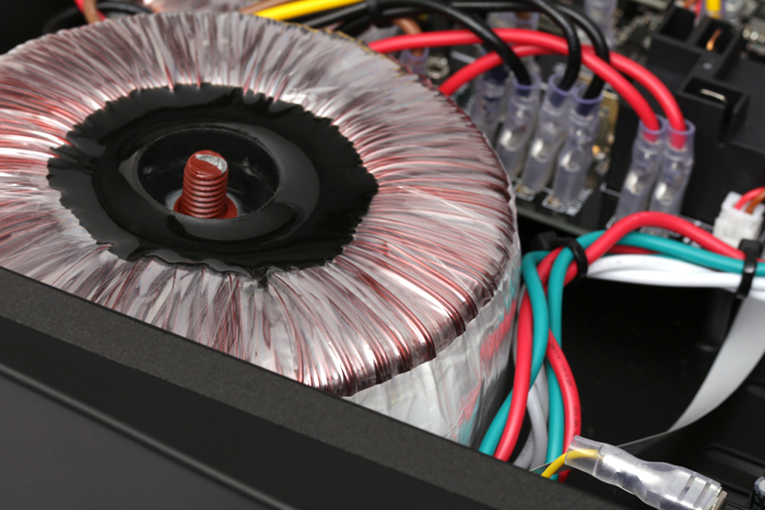
In a press release that accompanied the H95, Hegel stated, with characteristic Norwegian directness: “The H95 is built around the platform of the H90, and in all honesty, their analog sections are quite similar. On the H95 we have made small improvements in the power supplies and in the implementation of the analog stage. There are also improvements made to reduce noise on the headphone output.” Like the H90’s, the H95’s amplifier section is specified to output 60Wpc into 8 ohms; no spec into 4 ohms is given, but the minimum-load spec indicates that the H95, like the H90 and H80, is stable into 2 ohms.
That Hegel hasn’t much changed the power-amp stage isn’t that surprising. In the H90 they’d included the latest version of their SoundEngine technology, SoundEngine2, and no other product of theirs has included a further improvement of that technology. SoundEngine is Hegel’s name for their patented system of feedforward (as opposed to the feedback used in most amplifiers), which they say significantly reduces all types of distortion. They also claim that it significantly decreases the amp’s output impedance, to result in a very high damping factor -- over 2000 for the H95, though Hegel doesn’t specify an effective frequency or range of frequencies. This should translate into better speaker-driver control.
A bigger change is the new DAC section in the H95, which Hegel says they’ve lifted from the H120 ($3000) and H190 ($4000) integrated-DACs, and is “a massive step up from the H90.” Hegel doesn’t say much about the components comprising their products’ DAC sections, but I can tell you that the H95’s is based on one of the Asahi Kasei Microdevices (AKM) chipsets found throughout Hegel’s product range.
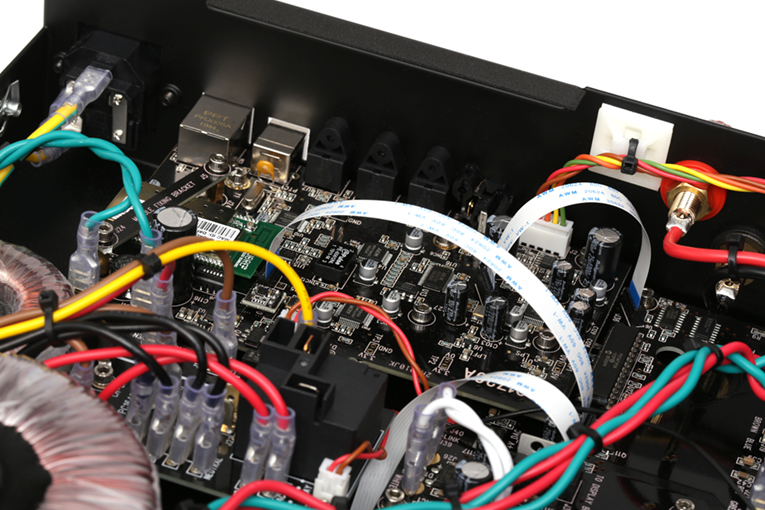
Hegel claims that the H95’s DAC can accept PCM signals of resolutions up to 24-bit/192kHz via all digital inputs except USB, which supports up to 24/96 PCM -- a limitation of the Tenor TE7022 receiver chip also used in the H90. In this sense the H95 is the opposite of most digital products, whose USB inputs typically support a given product’s highest audio resolutions. Even the USB inputs of Hegel’s own H390 and H590 support PCM up to 32/384, while those models’ other inputs top out at 24/192. But this oddity of the H95 isn’t all that surprising -- Hegel has consistently designed products based on what they think is the best way to do so, rather than bowing to market pressures, or others’ ideas or opinions. However, these choices can leave consumers scratching their heads -- and I suspect this aspect of the H95 will be no different.
Also unlike the pricier H390 and H590, the H95 doesn’t support playback of Master Quality Authenticated (MQA) and DSD files, and can’t function as a Roon endpoint. Most people won’t find these major omissions. MQA is a music format whose technology I consider questionable, while DSD represents a very small segment of the music-file-playing market. A much larger number of people will appreciate the H95’s support of Apple AirPlay and its future support, via a firmware update, of Spotify Connect.
Sounds
I first used the Hegel H95 with NHT’s C 3 Carbon Fiber loudspeakers -- the very ones I blasted the hell out of in that volume-control mishap. I did my listening in the same room occupied by the constantly changing components I write about in my “System One” column. That’s my living room, which measures 19’L x 15’W x 8’H. The Hegel and NHTs were connected with QED XT25 speaker cables. Mostly, I streamed music to the H95 from Tidal and Qobuz via UPnP via a generic Ethernet cable, but I also tried one of the Hegel’s optical inputs, connecting it to my Google Chromecast Audio streamer via a TosLink interconnect, to see if it would work (it did), and to play background music to break in the H95.
As soon as I began my serious listening, I was impressed with what I heard from the H95. I thought its sound through the super-high-resolution NHTs was slightly smoother than that of the Schiit Ragnarok 2 Fully Loaded integrated it replaced, whether I was using the Ragnarok’s built-in DAC or Schiit’s Bifrost 2 external DAC ($699), the latter connected to one of the Ragnarok 2’s balanced inputs. It also seemed that, despite both amps having the same power-output spec of 60Wpc into 8 ohms, the H95 delivered a bit more bass solidity, which in turn made the sound more forceful. (Caveat: The NHT C 3 Carbon Fibers produce very little output below 60Hz. I’m not sure how these two amps would compare in the low bass.)
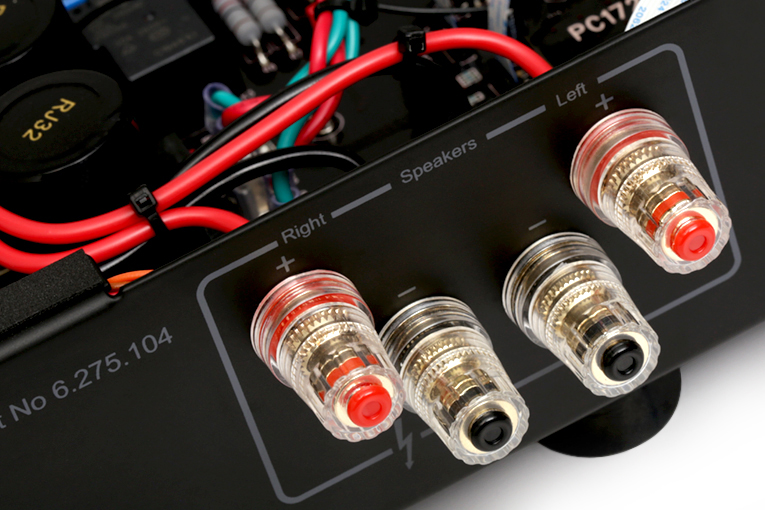
What was most surprising was that, the missing lowest bass aside, there was nothing about the H95’s sound that I wanted to criticize. Norah Jones’s Pick Me Up Off the Floor (24-bit/96kHz FLAC, Blue Note/Qobuz) sounded ultrasmooth and superclean, and I was dazzled by all the musical details constantly springing to life to surprise me. I followed that up with Jones’s very first album, Come Away with Me (16/44.1 FLAC, Blue Note/Qobuz) -- her voice was so clear, the highest highs so pristine, and the sound in general so free of colorations, that I found it hard to believe I was listening to a system that retails for a total of well under $4000. Again, except for that lowest bass that the NHTs can’t reproduce, I might have thought I was hearing a rig costing $8000 or even $12,000. (The speakers cost $1399.98/pair, the Monoprice Monolith stands they sit on are $109.98/pair, the speaker cables $89.99/pair, and the Ethernet cable about $20.)
I cued up “Los Ageless,” from St. Vincent’s all-acoustic MassEducation (16/44.1 FLAC, Loma Vista/Qobuz), grabbed my Sennheiser HD 650 headphones, and plugged them into the Hegel H95 just after the track began. This inadvertently revealed a nice feature not shared by all integrated amps that have headphone amps: I’d already donned the headphones, and when I plugged them in, I heard a click from inside the H95 as it switched its output from speakers to headphones -- not a pop through the speakers or headphones themselves. The speaker output instantly muted, and the volume level was just as instantaneously shelved down to “20,” the Hegel’s default startup volume for headphone output. And the moment I unplugged the Sennheisers, this all happened again, in reverse: a click from the amp as the headphone output muted, the speaker outputs went active, and now the speaker volume was at “20.”
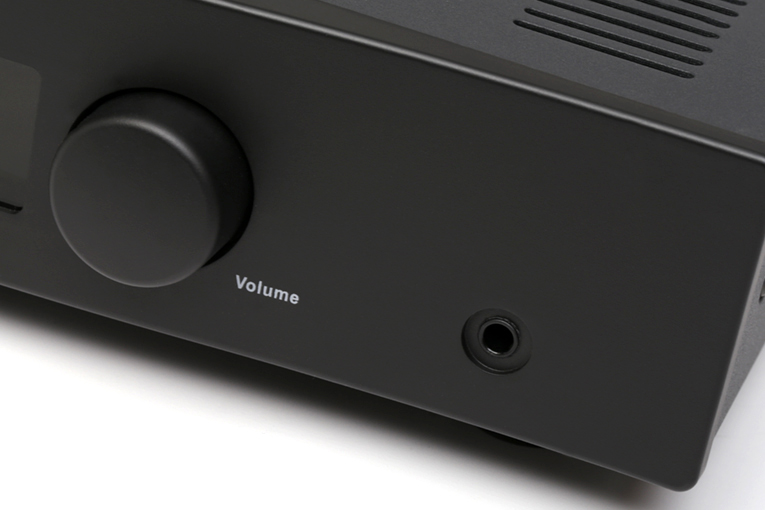
Through headphones, “Los Ageless” sounded as smooth and clean as what I was hearing through the speakers, and was again chock full of details, including what I figured was recording-equipment hiss, something I hadn’t paid close attention to before. Intrigued by the highly resolving sound, I stopped the music and turned the H95’s volume all the way up, to “99.” I heard no noise whatsoever through the headphones. I then unplugged the headphones to engage the speakers and ramped the volume up to “99” again. I heard a hiss as faint as I’ve heard from some of the best integrated amps on the planet. Damn, it’s quiet, I thought.
I plugged the headphones in again and played “Everest,” from Ani DiFranco’s Up Up Up Up Up Up (16/44.1 FLAC, Righteous Babe/Qobuz). DiFranco’s voice is at a high level on this track, and mixed almost hard left. There are lots of little nuances to focus on: her hand moving up and down her guitar’s neck toward the beginning, a subtly played tambourine in the background halfway through, Jason Mercer’s quiet voice entering close to the end. Through the HD 650s driven by the H95 I could hear nothing more than I’d ever heard before, but I certainly didn’t hear any less than I’m used to. And background noise was nonexistent. Clearly, the H95’s headphone output is no afterthought.
I unplugged the H95 and took it upstairs to my main listening room, which measures 36’L x 16’W x 8’H, though I used only half of that space for listening. The electronics of this system, too, were few: an Asus Zenbook UX303U laptop computer connected to the H95’s USB port with an AmazonBasics USB link. As soon as both ends of the USB link were plugged in, my laptop recognized the H95, and when I looked at its properties in the Windows 10 Control Panel, I saw playback resolutions ranging from “16 bit, 8000 Hz (Telephone Quality)” to the promised “24 bit, 96000 Hz (Studio Quality).” Absent, just as it had been with the H90 and H80, was 24/88.2. That was disappointing -- today, at all prices, most USB connections do support 24/88.2. True, there are many fewer high-resolution recordings available at 24/88.2 than at 24/96 -- but the former do turn up, and when they do, playback software will have to be used to resample 24/88.2 signals received via USB up to 24/96 -- or, as I’d prefer, down to 24/44.1, for an even-number sample-rate conversion. (The H95’s other digital inputs do support 24/88.2, of course.) However, the H95’s USB input has this benefit: the buttons on Hegel’s remote can be used to control Roon’s play, pause, and track-skip functions.
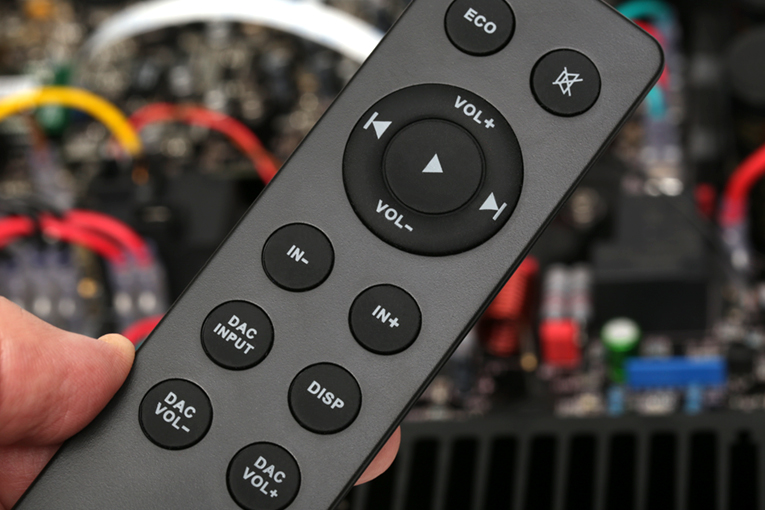
The speakers were Purifi Audio’s SPK5s, which I wrote about in a June 2020 feature. The SPK5s aren’t commercially available, but I figured they’d present an excellent test for this amp: I’m familiar with their sound, they present a typical load, and are of average sensitivity. And their ability to take a lot of power and still play loud and clean meant that I could give the H95 a real workout. The speaker cables, based on Cordial’s CLS 425 model and also described in that June article, were the ones Purifi had made up for me to use with the SPK5s.
I first streamed “Telegraph Road,” from Dire Straits’ Love Over Gold (16/44.1 FLAC, Vertigo/Warner Bros./Qobuz). I began playing the 14:18-long track at what I consider a typical listening level -- “51” on the H95’s display, which was loud enough to be enjoyable while still being able to carry on a conversation. The soundstage extended to each speaker’s outer edges, and about 12’ behind them. I could also hear all the little musical details this song is known for. As it had downstairs, the H95 not only sounded supersmooth and highly detailed, it sounded incredibly lively -- cymbals, guitar, and piano all had lots of high-frequency energy, popping from the mix with heightened immediacy. It was fun to listen to. Mark Knopfler’s voice projected from the mix forcefully, and the drums had serious slam -- the dynamics were great. All of this told me that the visceral, forceful sound I’d heard from past Hegel amps was alive and well in the H95.
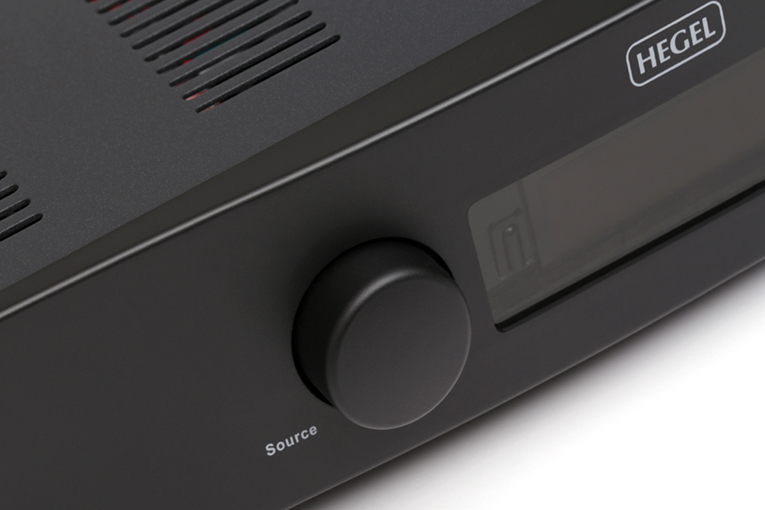
I wanted to hear if the H95 could deliver all these goods at high volume as well. At 10:55 in “Telegraph Road,” when drummer Pick Withers really kicks in, I pushed the volume up to “70” -- an increase of almost 10dB. This was uncomfortably loud -- I couldn’t have heard someone talking beside me -- yet the sound was still clean, powerful, and uncompressed, indicating to me that speakers and amp were still comfortably within their limits. The bass was whompin’ -- the H95 was no slouch in the low end, even at high volumes. Its 60Wpc isn’t all the power in the world -- had I raised the volume another 10dB it probably would’ve run out of steam and clipped -- but it should be enough for most people. I was playing these speakers damn loud in a damn big room.
So far, I’d streamed everything. To hear if the H95’s sound remained constant regardless of storage format, I played a track I’d ripped from CD to my solid-state drive of music files: “Where Are You Tonight?,” from the Cowboy Junkies’ The Caution Horses (16/44.1 FLAC, RCA). It did -- the clarity, high resolution, and prominent-but-not-too-bright highs I’d heard before I now heard again. Margo Timmins’s voice was so immediate I could’ve sworn she was in the room, singing to me. Immediately after, I put on “New Rules,” from Dua Lipa’s Live Acoustic EP (16/44.1 FLAC, Warner Bros.). The highs were similarly prominent; Lipa’s voice had tremendous presence, which viscerally punched to the fore just as Knopfler’s had; and each note of the piano accompaniment had startling clarity.
I listened to those two tracks back to back, and the moment “New Rules” was over, I jotted down the first word that came to mind: exciting. As soon as I did, another word popped to mind: clean. Nothing about the H95’s sound is that of an entry-level product.
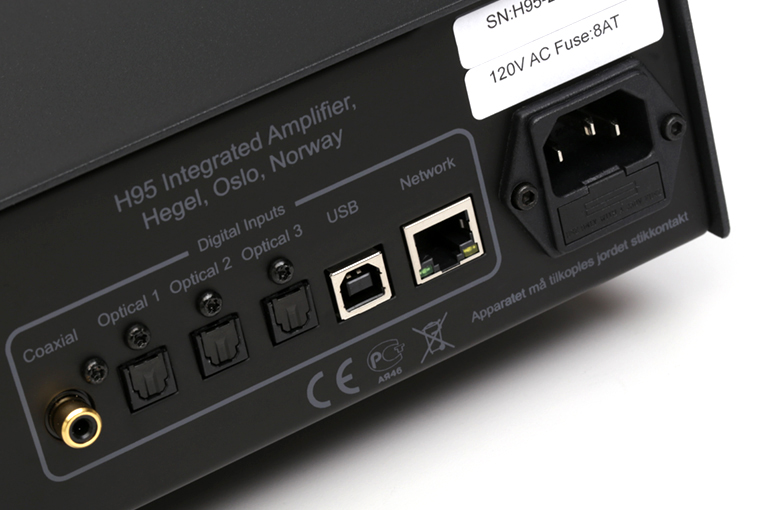
After listening to a lot more music through this setup in my main listening room, I still wasn’t quite finished with the H95. I took it back down to my living-room system, where the NHT C 3 Carbon Fibers were still set up, to spin some vinyl on my Pro-Ject Audio Systems X1 turntable and tonearm and their Pick it S2 cartridge. But no Hegel integrated or preamp has a phono stage, nor does Hegel make a standalone phono stage. Instead, I used an inexpensive model that I thought likely to be owned by someone who buys a $2000 integrated-DAC: Bellari’s VP549 phono stage ($149), manufactured in Salt Lake City, Utah, by Rolls Co. I hooked up the Bellari to the Pro-Ject’s RCA outputs with the X1’s stock phono cable, and to one of the H95’s analog inputs with an inexpensive pair of Axiom Audio single-ended interconnects -- again, these wires chosen to keep all of System One low-cost.
I played side 1 of Dire Straits’ Communiqué (LP, Mercury SRM-1-3791), and was blown away. Again, the low bass was MIA due to the NHTs’ limitations, but from the upper bass up through the midrange and highs, the sound was much clearer than what I’m used to from the Ragnarok 2 Fully Loaded’s built-in phono stage, for just $350 more. Mark Knopfler’s voice, in particular, was not only more prominent in the mix, its delineation from the instruments was much easier to hear than through the Schiit. Pick Withers’s cymbals, too, sounded clearer, airier, more prominent, as did Knopfler’s finger-picked guitar notes. I also noticed that the soundstage depth was more obvious than I’d heard before, particularly in “News,” in which Knopfler’s voice is forward on the stage, and the drums seemed to be about 10’ back.
I followed Communiqué with Bryan Ferry’s Boys and Girls (LP, Warner Bros. 25082 1). Again, the low bass was absent, but through the rest of the audioband the sound was spectacularly clear, with more details than I’d ever heard through the Pro-Ject X1. It was so much easier to hear Ferry’s lead vocal and the space surrounding all the musicians than through the Ragnarok 2 Fully Loaded’s phono stage.
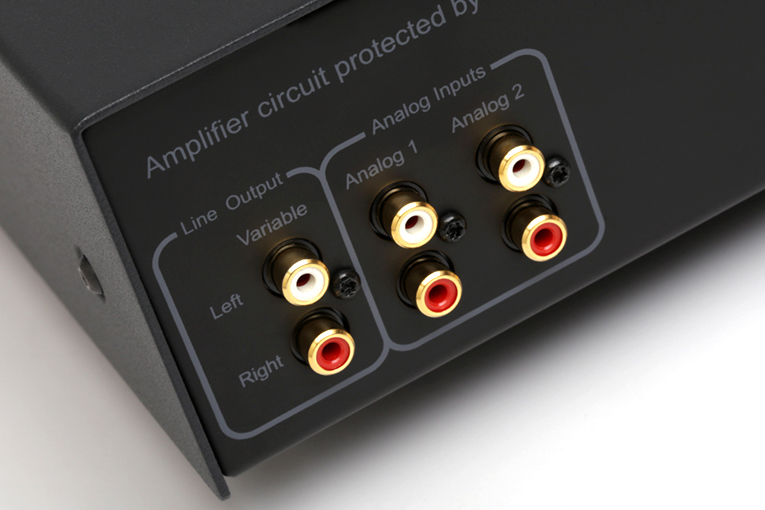
Next up was “I Can’t Tell You Why,” from the Eagles’ The Long Run (LP, Asylum X5E-508). I was taken aback by how clean and smooth Tim Schmit’s lead vocal and Glenn Frey’s lead guitar sounded, and by how starkly they stood out from the rest of the mix. In “Heartache Tonight,” though the weight of Don Henley’s drums was absent, I was floored by how clearly those drums and the space around them were reproduced, and by how powerful they sounded. These cuts from this LP played on the Pro-Ject X1 had never sounded so good.
I’d expected to knock the H95 a little for its lack of a built-in phono stage -- after all, these days, so many entry-level integrated-DACs have one. That was all changed by the superdetailed, super-refined sound of the Pro-Ject X1 turntable and Bellari VP549 phono stage plugged into the H95’s analog input with inexpensive interconnects. The convenience of having a built-in phono stage not withstanding, I think those who value great sound and play LPs might be better off getting an H95 anyway and then finding their own phono stage -- and a good one doesn’t have to cost that much. Besides Bellari, such reputable companies as Musical Fidelity, NAD, Pro-Ject, and others make well-regarded phono stages for under $200. And if you stretch your budget to $400 or $500, your options multiply.
Conclusion
The power output and build quality of Hegel Music Systems’ H95 are typical for integrated-DACs at its price, and its spare aesthetic is Hegel’s trademark look. The H95’s feature set is reasonably rich and gets mostly high marks -- especially the implementation of its headphone amp. But in a few areas it falls back, most notable for me being the limits of resolution of its USB input. But none of these are deal breakers, individually or even all together; how the H95’s feature set will affect a potential buyer will depend on the rest of that buyer’s system.
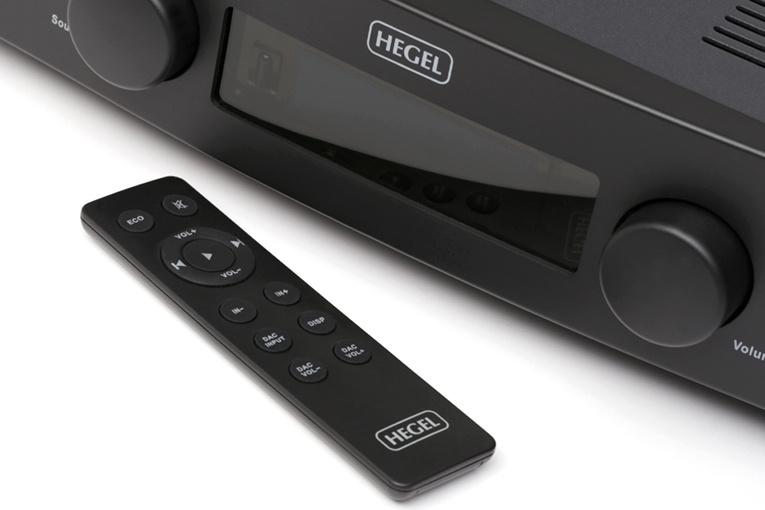
But the H95 smashes it in the same area that other Hegel amps I’ve heard have smashed it: sound quality. Whether you’re using the onboard digital converter or feeding a high-quality source through one of its analog inputs, the H95 provides an exceptionally clean, extremely detailed, super-dynamic, musical sound through speakers or headphones. Provided you don’t exceed its power limits, it’s comparable with integrated amps and separate preamps and power amps of pretty much any price. I encourage you to try Hegel’s H95 -- you may not get all the features and all the power possible, but it will provide you with a level of sound quality punching way above its modest price of $2000.
. . . Doug Schneider
das@soundstagenetwork.com
Note: for the full suite of measurements from the SoundStage! Audio-Electronics Lab, click this link.
Associated Equipment
- Speakers -- NHT C 3 Carbon Fiber, Purifi Audio SPK5
- Integrated amplifier-DAC -- Schiit Audio Ragnarok 2 Fully Loaded
- Turntable -- Pro-Ject Audio Systems X1 and tonearm and Pick it S2 cartridge
- Phono stage -- Bellari VP549
- Digital-to-analog converter -- Schiit Audio Bifrost 2
- Computer -- Asus Zenbook UX303U laptop running Windows 10, Roon, Tidal, Qobuz
- Digital link -- AmazonBasics (USB)
- Analog interconnects -- Axiom Audio single-ended (RCA), J&D balanced (XLR)
- Speaker cables -- Cordial CLS 425, QED XT25
- Power distributor/conditioner -- Shunyata Research Venom PS8 with Defender (2)
- Smartphone -- Samsung Galaxy S10
Hegel Music Systems H95 Integrated Amplifier-DAC
Price: $2000 USD.
Warranty: Two years parts and labor.
Hegel Music Systems AS
PO Box 2, Torshov
NO-0412 Oslo
Norway
Phone: +47 22-60-56-60
Fax: +47 22-69-91-56
E-mail: info@hegel.com
Website: www.hegel.com






















